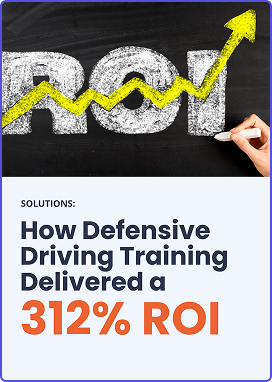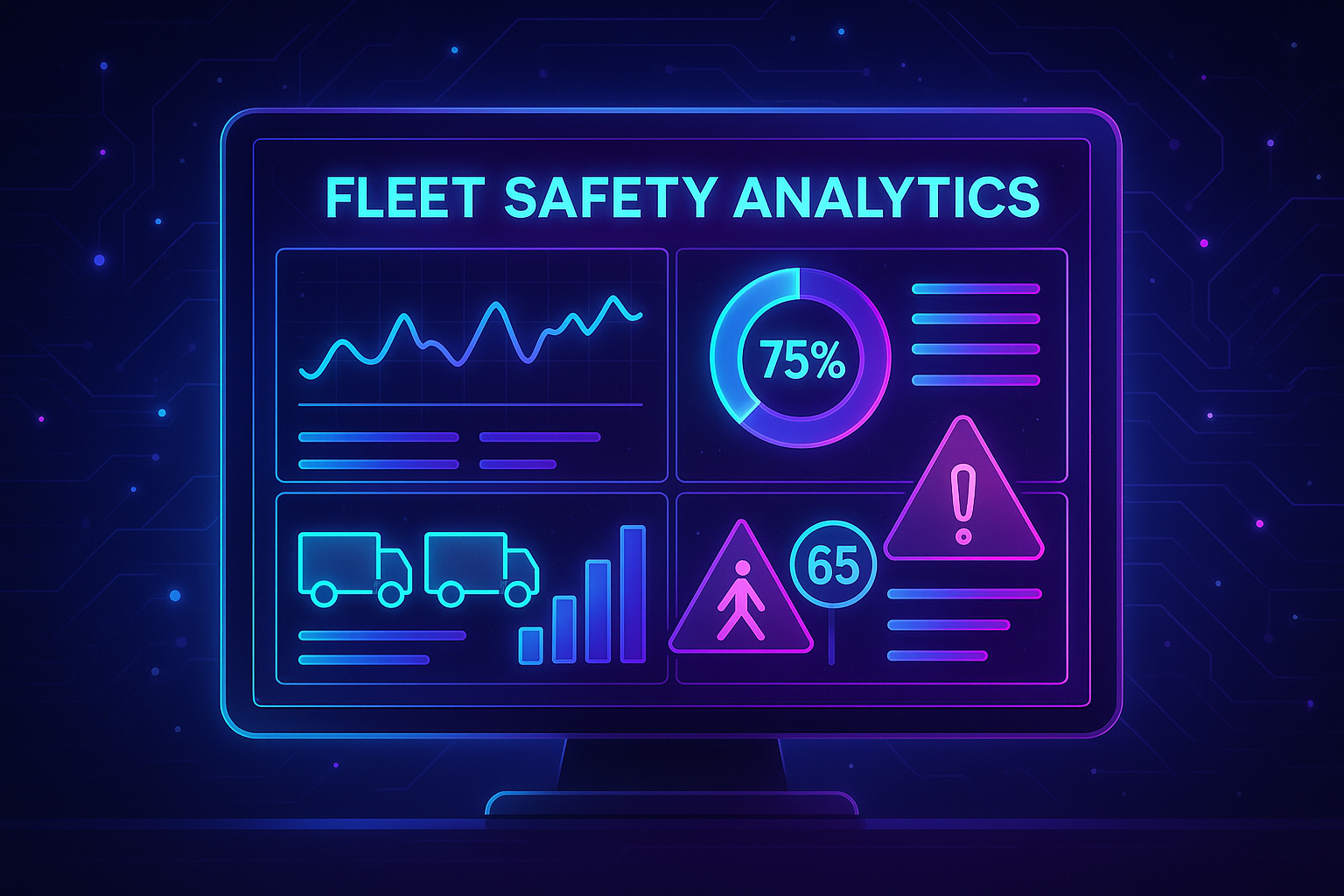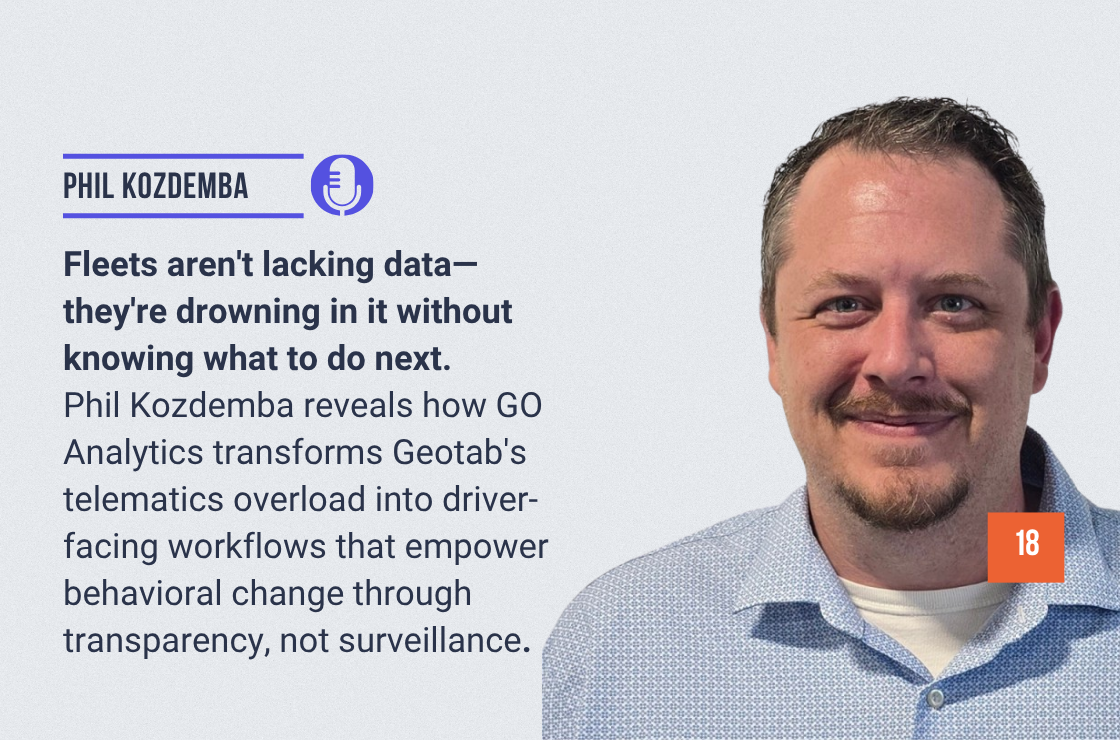
How Untrained Driver Behavior Leads to Downtime, Liability, and Reputational Risk
Fleet managers and EHS professionals spend considerable time tracking vehicle performance, fuel usage, and route efficiency; however, far too many overlook a silent profit killer that may be hiding in plain sight: untrained driver behavior.
From hard braking and aggressive turns to distracted driving and poor communication during roadside events, these seemingly minor behaviors create a massive cumulative cost. And it’s not just about dollars—it’s also about delays, insurance hikes, lost contracts, and public trust.
This article examines the cost of untrained driver behavior and explores how proactive fleets are reducing expenses while enhancing performance without adding vehicles or personnel.
The Real Cost of Driver Incidents
🚧 Direct Costs:
- Collision-related repairs: Even minor crashes can cost an average of $3,000 to $7,000.
- Insurance claims: Premiums rise after incidents, even if no one is injured.
- Fines and penalties: DOT violations add up—and erode CSA scores.
🕐 Indirect Costs:
- Downtime: A single vehicle out of service can disrupt entire delivery schedules.
- Driver replacement: High-risk behavior often leads to termination or attrition, resulting in costs of $8,000–$12,000 per hire.
- Administrative overhead: Filing reports, coordinating repairs, and legal consultations—all take time and resources.
🏢 Intangible Costs:
- Customer dissatisfaction: Missed deliveries or damaged goods damage long-term relationships.
- Reputational risk: A branded vehicle in a crash or aggressive driving complaint can go viral instantly.
- Team morale: A reactive safety culture breeds fear, not loyalty.
According to a 2023 Fleet Safety Benchmarking Study, fleets with above-average incident rates spend 24% more per vehicle annually than those with structured driver training programs.
Untrained Driving Behaviors That Drain Budgets
While some incidents are unavoidable, many stem from patterns that training can correct. Here are some of the most expensive behaviors you might be ignoring:
Behavior Hidden Cost
Harsh braking & cornering Increases tire and brake wear; higher crash risk
Speeding Raises fuel use, risk of injury, and insurance premiums
Distracted driving (e.g., phones) Primary cause of high-liability crashes
Poor route adherence Results in delays, idling, and scheduling breakdowns
Inadequate vehicle inspection Leads to preventable mechanical failure and breakdowns
Unsafe reversing or parking Major source of minor collision claims
Why Driver Training Isn’t Just an HR Task—It’s a Financial Strategy
Fleet managers who view training as a box to check are missing the point. Done well, safety training is an asset protection strategy.
🔧 Proper driver education:
- Reduces preventable incidents
- Improves vehicle longevity
- Lowers fuel and maintenance costs
- Keeps insurance costs stable
- Minimizes DOT violations and audits
- Reduces exposure to nuclear verdicts in litigation
According to the FMCSA, over 87% of crashes involving commercial vehicles are caused by human behavior—not mechanical failure or weather.
This means most incidents are preventable with better onboarding, refresher training, and performance coaching.
What High-Performing Fleets Do Differently
✅ 1. They Prioritize Behavior-Based Training
Beyond rules and regulations, top fleets train on:
- Emotional regulation (e.g., avoiding road rage)
- Eco-driving techniques (which also reduce stress and emissions)
- Anticipatory driving skills (spotting and reacting to risk before it escalates)
✅ 2. They Use Data to Coach, Not Punish
Modern fleets leverage telematics to:
- Identify high-risk driving behaviors early
- Provide real-time feedback
- Track improvements over time
This approach creates a feedback loop that reinforces good behavior instead of just penalizing bad behavior.
✅ 3. They Build a Culture of Proactive Safety
Proactive fleets don’t wait for accidents to start talking about safety. They:
- Include driver safety in onboarding and retention conversations
- Celebrate safety milestones
- Encourage peer recognition for good driving practices
This culture enhances engagement, accountability, and morale—all of which contribute to reduced turnover and incident rates.
How to Calculate the Cost of Driver Incidents in Your Fleet
Want a clearer picture of how much untrained behavior is costing you? Start by calculating:
- Incident frequency per 100,000 miles driven
- Average downtime per incident (including vehicle and driver)
- Total insurance premium increases post-incident
- Number of drivers terminated or replaced due to unsafe behavior
- Reputation damage costs (lost contracts, reviews, social media fallout)
Now compare these to the cost of:
- Driver onboarding time
- Safety and eco-driving training
- Monthly coaching sessions
- Telematics systems or risk analysis platforms
Most fleets find that investing in training pays for itself within the first year—sometimes within the first incident avoided.
Final Thoughts: Safer Drivers Save More Than Lives
If you’re dealing with recurring crashes, rising premiums, or erratic customer satisfaction, the problem might not be your vehicles—or even your routes. It could be your training.
Untrained or under-trained drivers don’t just pose a safety risk—they silently bleed your budget. But with a strategic investment in behavioral, scenario-based safety education, you can reduce incidents, protect your people, and restore operational stability.
Don’t just track the cost of incidents. Start monitoring the savings of prevention.







